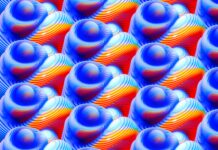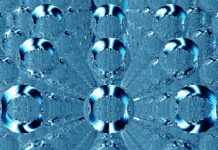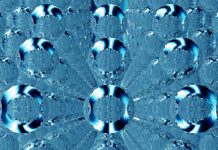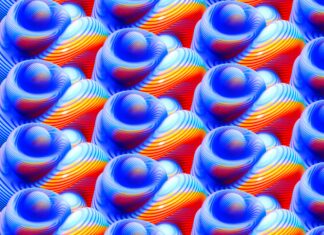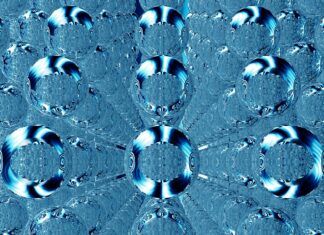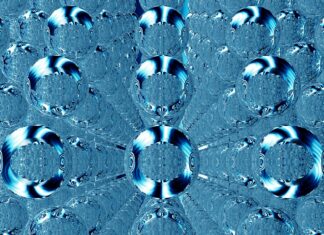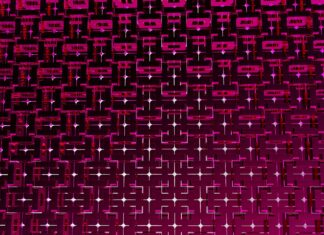4D Bioprinting: Merging Time and Biology
In the realm of advanced biomedical technology, the concept of 4D bioprinting has emerged as a cutting-edge innovation that holds the potential to revolutionize the fields of regenerative medicine, tissue engineering, and drug testing. Bioprinting itself is a fascinating development, allowing scientists and researchers to create intricate three-dimensional (3D) structures of living cells, tissues, and even organs. What sets 4D bioprinting apart is its incorporation of time as the fourth dimension, enabling the printed constructs to transform over time in response to external stimuli. This amalgamation of biological materials and dynamic responsiveness opens up new avenues for creating functional, adaptable, and patient-specific biological structures.
Understanding 4D Bioprinting: Unveiling the Fourth Dimension
Traditional 3D bioprinting has already demonstrated its potential in generating tissue constructs with predefined structures and complex architectures. This technique typically involves layer-by-layer deposition of bioinks, which are composed of living cells, biomaterials, and growth factors, to build three-dimensional structures that mimic the native tissues of the body. However, biological systems are not static; they respond to various cues, such as changes in the microenvironment, mechanical forces, and biochemical signals. This is where 4D bioprinting comes into play.
4D bioprinting introduces the element of time as an integral component in the fabrication process. The fourth dimension in this context refers to the temporal evolution of the printed constructs. These constructs are designed to undergo controlled transformations, such as shape changes, cell differentiation, or the release of therapeutic agents, in response to specific triggers. The triggers could be variations in temperature, humidity, light, pH levels, or the presence of certain molecules. By integrating the concept of time, researchers can mimic the dynamic behavior of biological tissues and organs more accurately.
How 4D Bioprinting Works: Melding Biology and Engineering
The process of 4D bioprinting involves a blend of biology, material science, and engineering expertise. At its core, it shares similarities with traditional 3D bioprinting, which employs various bioinks to recreate tissue structures layer by layer. These bioinks consist of living cells encapsulated within biocompatible hydrogels or other support materials. However, the key distinction lies in the formulation of the bioinks and the underlying design principles.
In 4D bioprinting, the bioinks are not only chosen for their ability to sustain cell viability and support tissue growth but also for their capacity to respond to external stimuli. These stimuli initiate changes in the printed construct’s properties, leading to shape transformations or functional shifts. Researchers carefully engineer the bioinks to achieve the desired responsiveness while ensuring that the triggered changes align with the intended medical application.
The actual bioprinting process involves advanced hardware and software systems that precisely deposit the bioinks layer by layer. In addition to spatial coordinates, these systems incorporate temporal parameters to control the transformation rate and sequence of the printed structures. This fusion of spatial and temporal precision opens up a wide array of possibilities. For instance, a bioprinted cardiac tissue construct could be designed to fold into a specific shape that mimics the geometry of the human heart, allowing it to better integrate with the patient’s own tissues after transplantation.
Applications of 4D Bioprinting: Pioneering Healthcare Frontiers
The potential applications of 4D bioprinting are vast and span across several domains of healthcare and medicine. One of the most promising areas is regenerative medicine, where the technology can be harnessed to create functional replacement tissues and organs. Imagine a scenario where a patient in need of a kidney transplant receives a 4D-bioprinted kidney construct. This construct, primed with the ability to respond to the body’s cues, could more seamlessly integrate into the recipient’s anatomy and function more effectively than static implants.
Moreover, 4D bioprinting offers opportunities for developing patient-specific therapeutic solutions. For instance, cancer treatment could be revolutionized by bioprinting tumor models that dynamically mimic the growth and response of real tumors. This would enable more accurate testing of potential drug candidates and personalized treatment strategies.
The field of soft robotics is also poised to benefit from 4D bioprinting. By integrating biologically responsive materials, researchers can create soft robots that adapt to their environment in a lifelike manner. These robots could find applications in targeted drug delivery, minimally invasive surgeries, and even artificial muscles for prosthetics.
Challenges and Future Directions: Navigating the Complexities
As with any pioneering technology, 4D bioprinting faces its own set of challenges and complexities. The design and engineering of responsive bioinks are intricate tasks that require a deep understanding of both biology and materials science. Developing bioinks that respond predictably and consistently to external stimuli is no small feat, and extensive research is needed to refine these formulations.
Another hurdle lies in the fabrication process itself. Ensuring that the printed structures transform reliably and uniformly in response to triggers demands precise control over various parameters, including timing, trigger intensity, and structural stability. Achieving this level of control is essential to guarantee the functionality and safety of the bioprinted constructs.
Ethical considerations also come into play, particularly when dealing with the creation of bioprinted models that closely mimic human organs and tissues. Striking a balance between technological advancement and responsible use is imperative to ensure that these innovations are utilized for the betterment of healthcare and not for unethical purposes.
Despite these challenges, the future of 4D bioprinting appears promising. As researchers delve deeper into the intricacies of designing responsive bioinks and refining the bioprinting process, the technology holds the potential to transform healthcare in ways previously thought unimaginable. With the ability to create dynamic, adaptable, and patient-specific constructs, 4D bioprinting marks a significant step forward in merging time and biology to shape the future of medicine.
Temporal Responsiveness:
Unlike traditional 3D bioprinting, 4D bioprinting introduces the dimension of time as a crucial element. This temporal aspect allows printed constructs to exhibit changes over time in response to external triggers such as temperature, pH levels, or light. This dynamic behavior closely mimics the adaptability of living tissues and enhances the potential for functional integration within the body.
Bioink Formulation for Responsiveness:
The bioinks used in 4D bioprinting are not only designed to support cell viability and tissue growth but are also formulated to respond to specific stimuli. These bioinks are carefully engineered to achieve controlled shape changes, cell differentiation, or drug release. This feature enables researchers to create constructs that transform in ways that are relevant to the intended application, offering unprecedented levels of customization.
Precise Spatial and Temporal Control:
4D bioprinting systems are equipped with advanced hardware and software that enable precise deposition of bioinks in both space and time. This dual control over spatial coordinates and temporal parameters allows for the creation of intricate, functional structures that can change shape or behavior at predetermined rates and sequences. The ability to orchestrate these transformations is critical for achieving the desired outcomes.
Regenerative Medicine Advancements:
One of the most promising applications of 4D bioprinting lies in the field of regenerative medicine. By creating tissue constructs that can adapt and evolve within the body, 4D bioprinting offers the potential to develop replacement tissues and organs that integrate more effectively with the patient’s anatomy. This could significantly improve the success rates of transplantation and reduce the risk of rejection.
Patient-Specific Design and Treatment:
4D bioprinting opens up new avenues for personalized medicine. Constructs can be tailored to respond to individual patient characteristics and medical needs. For instance, tumor models can be bioprinted to replicate the growth and behavior of a specific patient’s cancer, enabling more accurate drug testing and treatment planning. This level of customization holds the promise of delivering more effective and targeted medical interventions.
4D bioprinting stands at the nexus of science fiction and reality, a technological marvel that echoes the imaginative concepts of shape-shifting organisms in speculative literature. Yet, in laboratories and research institutions worldwide, this fantastical notion is transforming into a tangible force of innovation, poised to reshape the landscape of medicine, biotechnology, and beyond.
At its core, 4D bioprinting is a symphony of disciplines harmonizing for a singular purpose: to bridge the chasm between the static constructs of yesteryears and the dynamic, ever-responsive entities found in the living world. It is the orchestration of biology, material science, engineering, and more, conducted with precision to yield creations that dance to the rhythm of external cues.
The process begins with the marriage of cells and materials, a union that has given rise to the term “bioink.” These bioinks are carefully formulated concoctions, a blend of living cells cocooned within a nurturing matrix, waiting to be transmuted into structures that transcend traditional boundaries. This fusion of biology and chemistry crafts the canvas on which the symphony will be painted.
Enter the bioprinter – a contraption that wields meticulous precision to translate digital blueprints into tangible form. Like a maestro wielding a baton, the bioprinter deposits the bioink layer by layer, each step orchestrated with finesse. But in this symphony, precision isn’t limited to space; time has a role too. The sequences of deposition, the tempo of transformation, all play their part in composing the final opus.
As the layers stack, a three-dimensional sculpture emerges, intricate and promising. Yet, it is the fourth dimension, the temporal dimension, that elevates this sculpture from mere artifact to a creation imbued with life-like qualities. This fourth dimension is the silent conductor of the symphony, the mastermind behind the grand crescendos and subtle diminuendos that the printed structure will perform over time.
The triggers, akin to musical notes, are the keys to unlock the metamorphosis. Variations in temperature, pH, light, or the presence of specific molecules act as the symphony’s score, guiding the structure through a choreography of transformation. It is in this dance of responsiveness that the true marvel of 4D bioprinting unfolds.
Imagine, for a moment, a 4D-printed cardiac patch, designed to mimic the rhythm of a real heart. As it encounters the warmth of the body, it begins to contract, not mechanically, but organically. It responds to the ebb and flow of its environment, a dance of adaptation that ensures harmony with the biological orchestra it has joined.
But this symphony is not limited to medical marvels alone. It resonates across industries, echoing its potential in soft robotics, aerospace, and even art. Picture an autonomous soft robot, navigating an uncertain terrain. Its body, an ensemble of 4D-printed components, morphs and adapts as it encounters obstacles and challenges. The lines between the animate and inanimate blur, as the creation becomes a reflection of the dynamic world it inhabits.
Yet, as with any creation of profound innovation, the path to mastery is strewn with obstacles. The composition of responsive bioinks, the synchronization of transformational cues, the intricacies of fabrication – each element demands rigorous research and experimentation. The symphony must be rehearsed meticulously before it can be performed flawlessly.
Ethical considerations too form an integral note in this symphonic journey. The power to create entities that echo life prompts introspection. The balance between progress and prudence must be struck, ensuring that this technology uplifts humanity rather than sows discord.
In the grand concert of scientific advancement, 4D bioprinting is not just a fleeting melody but a recurring motif. It is a testament to human ingenuity, a bridge between imagination and reality. It exemplifies the quintessential human spirit to unravel the mysteries of the universe and orchestrate them into harmonious existence.
As the symphony of 4D bioprinting continues to play out, its melodies will resonate not only in laboratories but in hospitals, in industries, and in the wider fabric of society. With each responsive transformation, it will remind us that the boundaries of creation are ever-expanding, that the fusion of time and biology has given birth to a new genre of innovation. It is a genre that blurs the lines between creator and creation, inviting us to redefine what it means to shape life itself.




